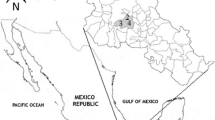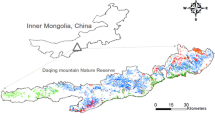Abstract
Forests provide wood products and feedstock for bioenergy and bio-based products that can mitigate climate change by reducing carbon emissions. In order to assess the effects of forest products on reducing carbon emissions, we analyzed the carbon balance for individual carbon pools across the forest supply chain over a long period of time. We simulated particular forest supply chain activities pertaining to even-aged management of pine stands in South Korea to demonstrate our methods. Two different rotation scenarios (i.e., 40 and 70 years) were assessed over the 280-year time horizon in terms of temporal changes in carbon stock in each carbon pool along the supply chain, carbon transfer between carbon pools, substitution effects, and delayed carbon release by wood products. We found that the average carbon stock level was higher for the 70-year rotation scenario, but the total amount of gain in carbon was higher for the 40-year rotation at the end of the time horizon. This study confirms that forest products and energy feedstock can both reduce carbon emissions and increase carbon storage. However, the complexity of carbon accounting along the supply chain warrants a thorough evaluation from diverse perspectives when it is used to assess forest carbon management options.








Similar content being viewed by others
References
Aber JD, Melillo JM (1991) Terrestrial ecosystems. Saunders College Publishing, Philadelphia
Becker DR, Moseley C, Lee C (2011) A supply chain analysis frame work for assessing state-level forest biomass utilization policies in the United States. Biomass Bioenerg 35:1429–1439
Chung J, Han H, Kwon K, Seol A (2013) Development of a carbon budget assessment model for woody biomass processing and conversion. Centre for Climate Change forestry research paper. Korea Forest Service, Republic of Korea (in Korean)
Eriksson E, Gillespie AR, Gustavsson L, Langvall O, Olsson M, Sathre R, Stendahl J (2007) Integrated carbon analysis of forest management practice and wood substitution. Can J For Res 37:671–681
Green C, Avitabile V, Farrell EP, Byrne KA (2006) Reporting harvested wood products in national greenhouse gas inventories: implication for Ireland. Biomass Bioenerg 30:105–114
IPCC (2006) 2006 IPCC guidelines for national greenhouse gas inventories. In: Eggleston S, Buendia L, Miwa K, Ngara T, Tanabe K (eds) National greenhouse gas inventories programme. IGES, Japan
IPCC (2014) 2013 Revised supplementary methods and good practice guidance arising from the Kyoto protocol. In: Hiraishi T, Krug T, Tanabe K, Srivastava N, Baasansuren J, Fukuda M, Troxler TG (eds). IPCC, Switzerland
Jeon JN, Cha JH (2011) Development of Korean protocol for forest carbon offset project of harvested wood products (HWPs) in forest management sector. Centre for Climate Change forestry research working paper 3. Korea Forest Service, Republic of Korea (in Korean)
Korea Forest Research Institute (2005) Standard manual for sustainable forest management. Republic of Korea, Seoul (in Korean)
Korea Forest Service (2009) Climate change and forestry. Republic of Korea, Daejeon (in Korean)
Korea Forest Service (2010) Timber use survey in Korea. Republic of Korea, Daejeon (in Korean)
Korea Forest Service (2013) Timber use survey in Korea. Republic of Korea, Daejeon (in Korean)
Korea Ministry of Environment (2013) Waste occurrence and disposal in Korea. Republic of Korea, Sejong (in Korean)
Kwon S, Chung J (2004) Development of individual-tree distance-independent simulation model for growth prediction of Pinus koraiensis stands. J Kor For Soc 93:43–49 (in Korean with an English abstract)
Kwon K, Han H, Seol A, Chung H, Chung J (2013) Development of a wood recovery estimation model for the conversion processes of Larix kaempferi. J Kor For Soc 102:484–490 (in Korean with an English abstract)
Lee JI, Kim IS, So HJ (2009) A study on the energy utilization of woody biomass. Gyeonggi Research Institute policy report 2009-35. Republic of Korea, Suwon (in Korean)
Liski J, Pussinen A, Pingoud K, Mäkipää R, Karjalainen T (2001) Which rotation length is favourable to carbon sequestration? Can J For Res 31:2004–2013
Mathieu F, François N, Nicolas R, Frédéric M (2012) Quantifying the impact of forest management on the carbon balance of the forest-wood product chain: a case study applied to even-aged oak stands in France. For Ecol Manage 279:176–188
Peckham SD, Gower ST (2013) Simulating the effects of harvest and biofuel production on the forest system carbon balance of the Midwest, USA. GCB Bioenerg 5:431–444
Perez-Garcia J, Lippke B, Comnick J, Manriquez C (2005) An assessment of carbon pools, storage, and wood product market substitution using life-cycle analysis results. Wood Fiber Sci 37:140–148
Pipatti R, Svardal P, Silva Alves JW, Gao Q, López Gabrera C, Mareckova K, Oonk H, Scheehle E, Sharma C, Smith A, Yamada M (2006) Solid waste disposal. In: Eggleston S, Buendia L, Miwa K, Ngara T, Tanabe K (eds) IPCC guidelines for national greenhouse gas inventories, vol. 5, waste. IGES, Japan
Profft I, Mund M, Weber GE, Weller E, Schulze ED (2009) Forest management and carbon sequestration in wood products. Eur J For Res 128:339–413
Sheehan J, Camobreco V, Duffield J, Graboski M, Shapouri H (1998) Life cycle inventory of biodiesel and petroleum diesel for use in an urban bus. NREL/SR-580-24089, USDA final report
Solomon S, Qin D, Manning M, Chen Z, Marquis M, Averyt KB, Tignor M, Miller HL (2007) Contribution of Working Group I to the fourth assessment report of the International Panel on Climate Change. Cambridge University Press, NewYork
Son YM, Lee KH, Kim RH, Pyo JK, Park IH, Son YH, Lee YJ, Kim CS (2010) Carbon emission factors on the major tree species for forest carbon inventory. Korea Forest Research Institute (KFRI) research report 10-25. Republic of Korea (in Korean)
Son YM, Lee KH, Kwon SD, Pho JK (2012) Tree volume, biomass and yield table in South Korea. Korea Forest Service, Republic of Korea (in Korean)
Van Kooten GC, Laaksonen-Craig S, Wang Y (2009) A meta-regression analysis of forest carbon offset costs. Can J For Res 39:2153–2167
Winjum JK, Brown S, Schlamadinger B (1998) Forest harvests and wood products: sources and sinks of atmospheric carbon dioxide. For Sci 44:272–284
Acknowledgments
This study was carried out with the support of the R&D Program for Forestry Technology (project no. S211315L020110) of the Korea Forest Service.
Author information
Authors and Affiliations
Corresponding author
Additional information
This article has been submitted for the special feature entitled “Climate change mitigation and adaptation in the forestry sector”.
About this article
Cite this article
Han, H., Chung, W. & Chung, J. Carbon balance of forest stands, wood products and their utilization in South Korea. J For Res 21, 199–210 (2016). https://doi.org/10.1007/s10310-016-0529-2
Received:
Accepted:
Published:
Issue Date:
DOI: https://doi.org/10.1007/s10310-016-0529-2




